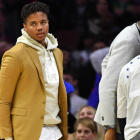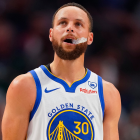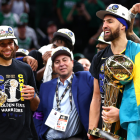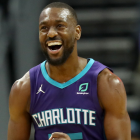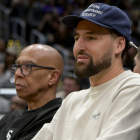After over a year of problems with his shoulder and shooting form, Philadelphia 76ers guard Markelle Fultz has finally received a diagnosis for what's been causing the issues: thoracic outlet syndrome. If you're like many people, you've probably never heard of that one before.
Fultz is technically out "indefinitely" according to the Sixers, but ESPN's Adrian Wojnarowski reported that the team has hope he can return to the court in three to six weeks.
To get a better understanding of Fultz's injury and what lies in store for him during his recovery, CBS Sports spoke with certified athletic trainer Jeff Stotts. In addition to his work in the field, Stotts runs his own website, InStreetClothes.com, and serves as an injuries analyst for CBS Sports partner Rotowire.com.
CBS Sports: Thoracic outlet syndrome (TOS) is a complicated issue, but I guess just broadly, what are we talking about here?
Jeff Stotts: Thoracic outlet syndrome is an impingement issue with either the blood vessels -- arteries and veins -- or nerves that run through a very specific space in between your neck and shoulders. Specifically in the region where your first rib and clavicle (collar bone) come together near the shoulder girdle.
What happens is for some reason the space that these vessels and nerves travel becomes impinged. So for example we have carpal tunnel syndrome, which is you have this carpal tunnel in your wrist where tendon and nerves go, and when those tendons become inflamed, it can impinge on the nerve.
In the shoulder, when there's some kind of impingement or pinching going on, it can cause all kind of problems. It really depends on what's being impinged. In Fultz's case it's neurogenic TOS, which means it's impinging on the nerve and not the blood vessels. Blood vessels can be a little more problematic, but the nerve getting pinched is the most common type of TOS and it leads to a variety of symptoms. It can be anything from a headache, to numbness and tingling down into the fingers, to muscle weakness and muscle atrophy, all based on this very specific pinching in this very specific area.
CBS: Fultz has been dealing with this problem for over a year at this point. What makes it so tricky or complicated to get to this diagnosis?
JS: Well it's usually a diagnosis of exclusion, which means they've exhausted all their options. It's not a labral tear, it's not a muscle tear, they just keep checking things off until they finally get to the point where they say 'OK, this is likely TOS.' Then they start doing like nerve conduction tests or other tests to come up with the possibility of TOS. Now, they haven't said what's causing Fultz's impingement -- it's likely indicated that it's muscle due to the fact that they're going to treat it with therapy.
Because if it is something like a congenital defect -- some people are born with an extra cervical rib in that area -- they get that rib removed, that stops the pinching, and the problem is resolved. But in most cases, conservative treatment is tried first, and if that doesn't work then they might explore the surgical route.
CBS: Could the delay in the accurate diagnosis have been making the problem worse?
JS: It's possible if there was repetitive nerve damage going on. But sometimes with traumatic TOS, which is not related to a congenital defect or repetitive motion, but there was some trauma that resulted in it, the symptoms could be slow to develop. There's not necessarily a guarantee that he's been making it worse by a delayed diagnosis.
But it's good that they're at this point now because they at least have some options to pinpoint the problem and begin treatment, therapy, all those things.
CBS: So, because it deals with inflammation leading to impingement on a nerve, is it possible there were times -- depending on the level of inflammation -- it was a big problem and others where it was fine?
JS: Well if it is muscle related -- say with the scalene muscles -- and that muscle becomes inflamed or irritated, thus causing the pinch. If the pinch is worse one day than it is others, that would obviously lead to an exacerbation of symptoms. Again, it gets back to that so much of TOS depends on what is the root cause of the impingement. And that's such a big question mark regarding Fultz, because we aren't privy to that information.
CBS: Right, that makes sense. I just ask because when we saw him on the court there were some days where his form looked OK, and other days where he just couldn't shoot at all.
JS: It's possible, especially since Philly seemed to address the problem a little bit last year. He had a cortisone injection in his shoulder, he had some scapular muscle imbalances. So maybe some of the treatment they were doing helped alleviate some of it, but not all of it? There's still a lot to dissect here, and it's probably not fair to Fultz or even Philadelphia's medical staff to speculate on what was going on. The focus is now we have a diagnosis, let's get him better.
CBS: Also from a basketball sense, we would see him still be able to pass, and he could dunk, but it seemed like his shooting form was really the main thing affected. With TOS, is it more of a problem with overhead motions? What was the possible reasoning behind his form being most affected?
JS: That could definitely be it, especially if that's the muscle that's involved. So there are muscles that are involved in raising the arms over the head. We see TOS a lot of times in baseball players, especially pitchers because of their repetitive overhead motion, they're more prone to it.
There have been tons of guys -- Matt Harvey, Tyson Ross, Phil Hughes, Josh Beckett -- all these guys have had TOS and it was likely linked to a congenital defect that was exacerbated by the overhead motion of pitching, or just the repetitiveness that comes with that constant motion.
That's the problem with TOS, that the symptoms vary from person to person, and it's a diagnosis of exclusion. It's not necessarily easy to always pinpoint or even diagnose.
CBS: Have you seen the one play where he was passing the ball back and forth to himself as he went up for a free throw? Was that more of a mental thing? Or what were your thoughts on that?
JS: I thought it was likely a mental thing. I think it was one of those things where -- that occurred before the diagnosis. It was unknown what was going on, and Fultz was obviously physically limited, but he was likely mentally exhausted from not knowing why his body wasn't responding and what was going on.
That's the thing that's overlooked a lot of times with injury. Yes, the physical injury is bad, yes the physical injury is there, but it's the ramifications mentally that can wear down a player. Look at a guy like Gordon Hayward, who is just now starting to look comfortable on the court. Is that mental or physical? It's probably a little bit of both.
So my guess is that at that point Fultz was just trying to find any kind of release, and if it was mental at that point, maybe that was a design to alleviate some of that. But hopefully, like I said, Fultz now has a diagnosis and can turn the page on everything that was happening previously and start focusing on getting better.
CBS: Right, because people talk about the yips or what not, but I would imagine that on some basic level it's just mentally exhausting to be dealing with pain or your body not responding the way you want, and not knowing why it's happening. An actual diagnosis and treatment plan should help with that aspect.
JS: Yeah, and I mean this guy is the former No. 1 pick playing for a team that's always playing on national TV, so there's a lot of pressure on this guy.
There's something I've done with patients before, and I say 'I want you to think about what you're doing when you're brushing your teeth.' It's something we do every day, hopefully, but when you start actually thinking about it, it might get in your head a little bit. Like oh I'm holding it this way, or that way. And that might not translate exactly, but when you start thinking so much about something you've done routinely your entire life, it can get funny. It's also like when you say a word over and over, suddenly that word begins to sound weird. So if you're overthinking things, it's going to get more difficult.
Now, imagine doing that with 20,000 people with their eyes on you, and the scrutiny in the media, it would be tough. So like I said, hopefully this is the light at the end of the tunnel. He has the diagnosis, he has something to build on, and can allow him to get back to being that guy he was out of college.
CBS: With this diagnosis, it appears the Sixers are going to go the rehab and physical therapy route. What do exercises or treatment look like for this? Because it's not one we're used to hearing about like a muscle strain or ligament tear.
JS: I think they'll look at the muscles as a whole in that area and see if there's something they could be doing to move more efficiently. You know, people tend to think of the shoulder as just the ball and socket, but the shoulder is a pretty complex joint. It includes the sternoclavicular joint where your sternum meets your clavicle, your AC joint where your clavicle meets your shoulder blade, the glenohumeral joint, which is that ball and socket joint, and then the scapulothoracic articulation which is where your scapula actually moves on your ribcage.
All of those things come into play with movement of your shoulder. So when one of them is limited, it causes a trickle down effect. So if they can pinpoint something they can do to alleviate some of those concerns, and then just general stretching techniques, anything they can do to get better control in the shoulder.
CBS: The timeline we've seen the Sixers put out is three to six weeks until he returns. We've seen that he can still play and be somewhat effective, but do you think that's a realistic timeline to address the underlying problem?
JS: It's really hard to speculate because we don't have a good comparison to make. There have been very few cases, if at all in the NBA. There was one reported for the first time I saw yesterday -- Ben Uzoh -- but he wasn't diagnosed when he was in the NBA, it was when he was in the G-League. There's just not a whole lot of good comparisons.
Does that seem fair? It's possible. But I think for everybody it's going to end up being an interesting case study and talked about a lot when any future TOS diagnoses are made.
CBS: Lastly, I know we don't have all the information in Fultz's medical file, but generally speaking, is TOS something you can fully recover from? Or will there always be some lingering effects?
JS: It just depends on the case. There have been mixed studies in baseball. Chris Carpenter, Josh Beckett were never really quite as effective once they had TOS surgery. Matt Harvey came back but wasn't super effective. You've seen a couple other guys come back and pitch, but not at a high level. Again, that's a completely different sport.
Is it possible? Absolutely. But I think a lot of people -- myself included -- are now in a wait and see approach. I'm fascinated to see what happens, and I really hope it works out for the kid.









